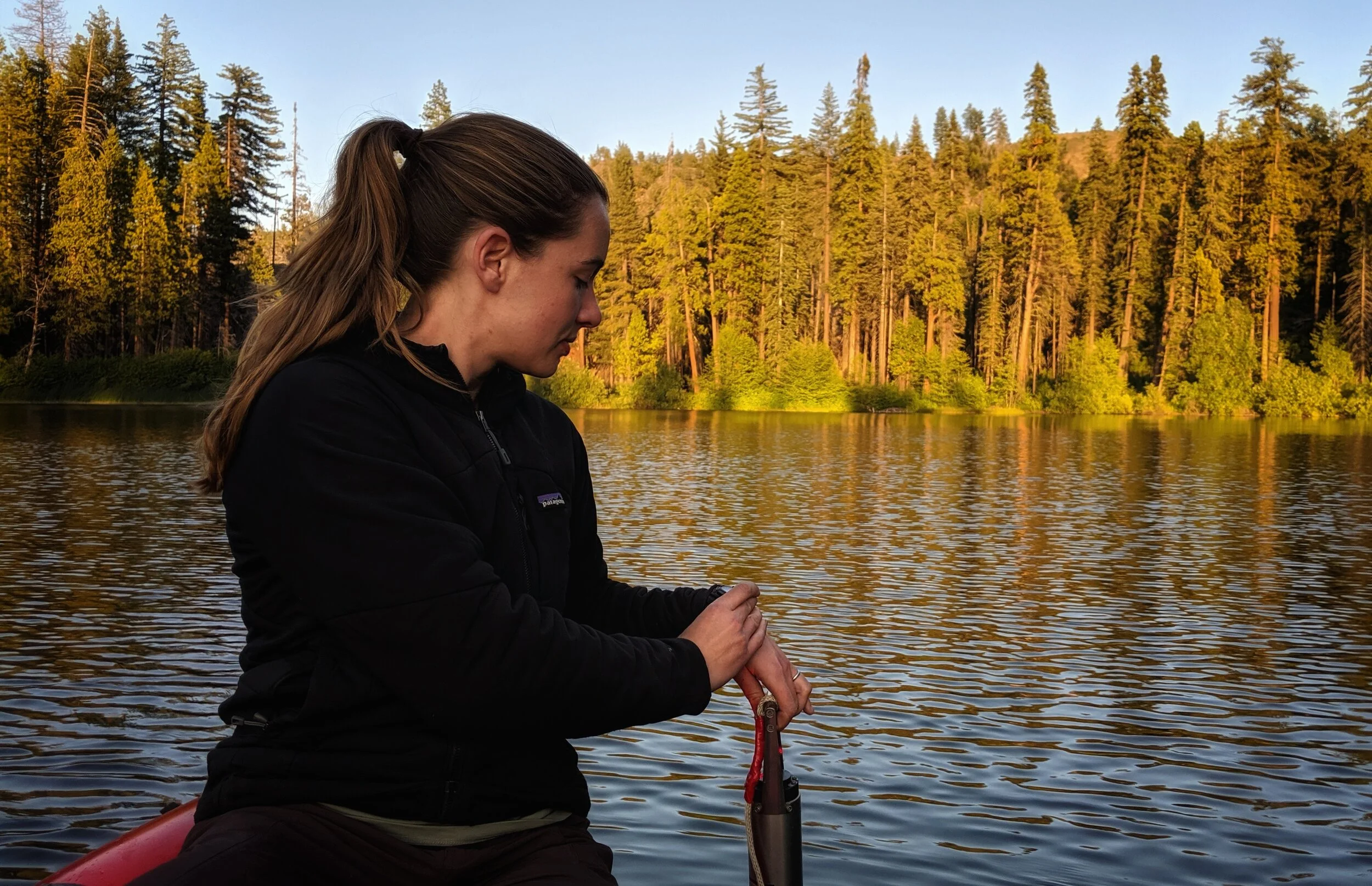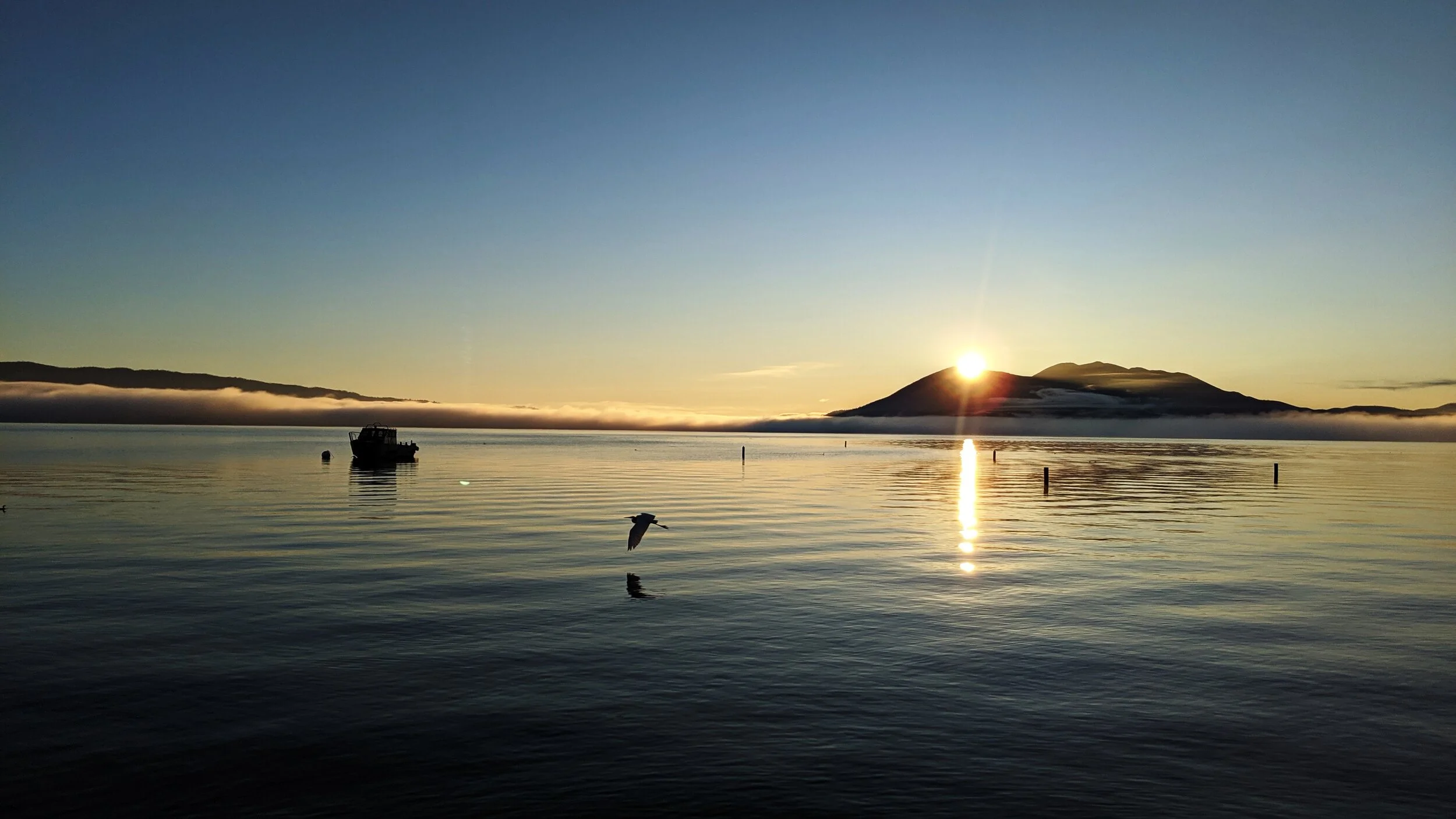Research Projects
We seek to understand how interactions among abiotic and biotic factors affect the structure, function, and ecology of freshwater and estuarine ecosystems to support their management and conservation.
Emerald Lake and Tokopah basin long term limnological and watershed study
Long term research in Emerald Lake and the Tokopah basin of Sequoia National Park began in the early 1980’s as part of a study examining the effects of atmospheric deposition of nitrogen on acidification in aquatic ecosystems. More recently, our research has focused on impacts of climate change on ecosystem function. Combining some of the highest elevation meteorological measurements made in California with year-round in situ measurements, we study how the ecosystem function of Emerald Lake, and a range of other representative ponds and lakes within the basin, respond to environmental change.
California Mountain Lake Network
Predicting ecosystem responses to environmental change across large spatial scales requires an understanding of mechanistic relationships between drivers and response variables, and of how those interactions vary across space and through time. The California Mountain Lake Network (CaMoLaN) was established in 2017 with the goal of understanding how fundamental lake ecosystem functions respond to interactions among factors that vary continuously at large spatial scales, such as with elevation, and factors that vary heterogeneously with local scale factors, such as lake size or catchment attributes.
Castle LAke Long term ecological research
Continuing the long term limnological research started in 1959 by Dr. Charles Goldman, we co-manage the Castle Lake Environmental Research and Education Program (CLEREP) with Dr. Sudeep Chandra at the University of Nevada - Reno. Ongoing research areas include: climate and fish stocking as drivers for ecosystem productivity; benthic productivity and trophic linkages between aquatic and terrestrial habitats; nutrient availability and transport as a function of bedrock geology, soil and ecosystem type; small watershed hydrology; long term changes in climate, water quality and chemistry, primary and secondary production (plankton and benthos), and fish composition.
Water quality of Clear Lake, CA
As part of UC Davis Tahoe Environmental Research Center (TERC), we are engaged in a multi-year study to understand the dominant physical, chemical, biological, and hydroloigcal processes in Clear Lake and its watershed that negatively impact the rehabilitation of water quality and ecosystem health within the lake.
disentangling the roles of nutrients and light in regulating productivity in the sacramento-san joaquin delta
It remains unclear what combination of factors has contributed to long term declines in productivity within the Sacramento-San Joaquin Delta. In collaboration with USBR and USGS, we seek to understand how spatial and temporal variation in light and nutrients interact to affect productivity by examining the effects of physical mixing dynamics, nutrient availability, and light on ecosystem metabolic rates, and consider the implications of variation in these factors on phytoplankton and zooplankton dynamics.
Periphyton dynamics in the nearshore waters of Tahoe
Benthic algal blooms are thought to be increasing in Lake Tahoe and other lakes throughout the world. Although climate change is causing warming in lakes world-wide, the effect of warming during different seasons on periphyton growth rates in Lake Tahoe is unknown. In collaboration with other researchers at the Tahoe Environmental Research Center (TERC), we seek understand spatial and temporal patterns of periphyton growth within nearshore waters of Tahoe and how they respond to changes in climate and watershed dynamics.
Effects of wildfires on lake productivity and oxygen deficits in the western U.S.
Extreme wildfires generate large plumes of smoke and ash that can travel thousands of miles and persist for weeks or longer in the atmosphere, blocking light and depositing ash. The potential impacts from smoke and ash on aquatic ecosystems over large geographic regions remain largely unknown. Light and nutrients are both important factors that regulate the growth of plants and algae in aquatic ecosystems, with implications for other organisms as well as many aspects of water quality. Thus, understanding how and why aquatic primary production is responding to wildfires is a critical research objective. This National Science Foundation funded project will help develop a predictive understanding of how aquatic ecosystems respond to wildfire, serving the 29 National Forests, 14 National Parks, and numerous lands managed by the states of California and Oregon.






